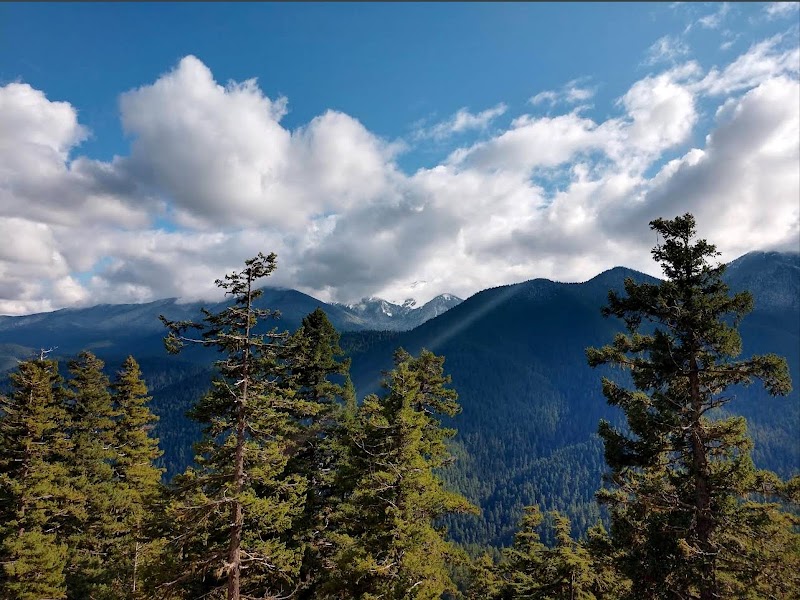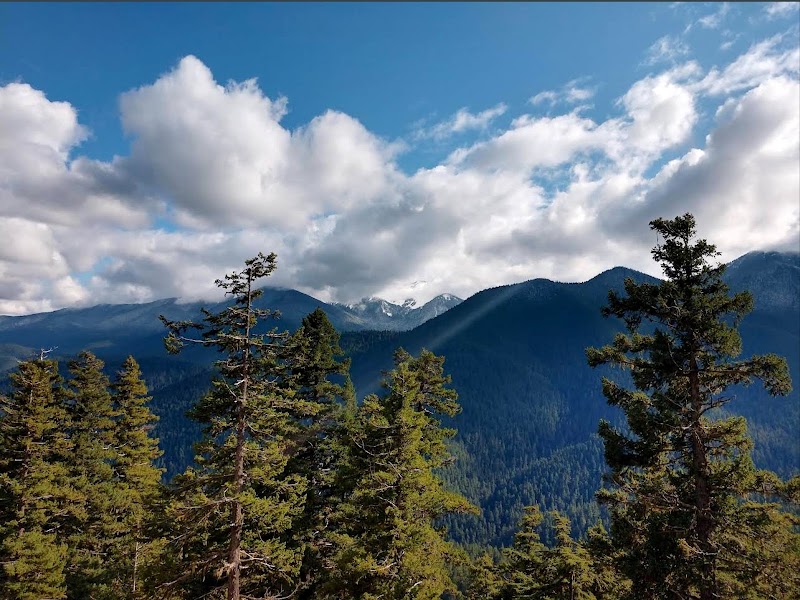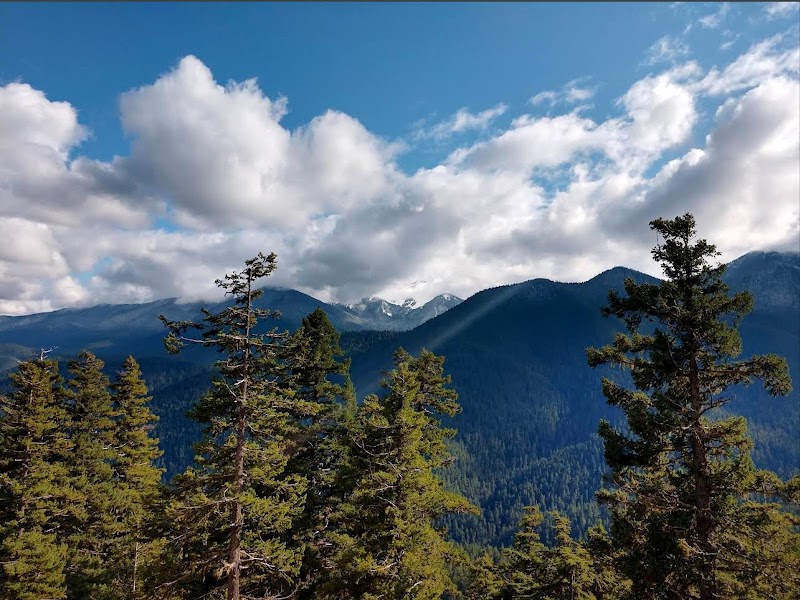Introduction
Get ready to answer the call of the wild at the Olympic National Park, a vast biosphere reserve covering almost a million acres of diverse landscapes. From the majestic Mount Olympus, cascading waterfalls, mesmerizing rainforests to the rugged Pacific coastline, this park is a treasure trove of natural wonders waiting to be explored. Using the Tourist Map of Olympic National park, your adventure becomes seamless and memorable.
The Tourist Map of Olympic National Park is more than just a guide; it's your key to unlocking the wonders of this extraordinary destination. It's a tool to ensure you make the most out of this breath-taking wilderness.
" Booking.comDiscover the Unseen Wonders of Olympic National Park
Spanning across Washington State's heart, the enchanting wilderness of Olympic National Park offers a wide array of dramatic sceneries and immersive experiences. This natural masterpiece, a mosaic of ecosystems, invites you to explore beyond the usual tourist trail. Let's delve into the park's unique attractions that are sure to leave you in awe.
Unearth the Secrets of the Hoh Rain Forest
Embark on an unforgettable journey into the lush depths of the Hoh Rain forest, a mesmerizing world of moss-draped trees and ancient ferns. This temperate rainforest is a haven for biodiversity. Its dense, emerald-green foliage is home to a captivating array of wildlife, making it a dream destination for nature enthusiasts and a gem on the tourist map of Mount Rainier National Park.
Marvel at the Sol Duc Valley's Natural Splendor
Next, voyage into the magnificent Sol Duc Valley. Beyond its lush landscapes, the valley harbors the Sol Duc Hot Springs and the enchanting Sol Duc Falls, a spectacular three-pronged waterfall that cascades into a serene pool. The valley's network of trails, weaving through old-growth forests and along sparkling rivers, offers an exhilarating exploration experience.
Experience the Untamed Beauty of the Pacific Coastline
Stretching over 70 miles, the Olympic National Park's Pacific coastline is a realm of rugged beauty and extraordinary biodiversity. From the sandy beaches of Kalaloch and Ruby Beach to the commanding sea stacks of Rialto Beach, each coastal spot presents a unique spectacle. Don't forget to check the tourist map of Rocky Mountain National Park to strategize your coastal journey effectively.
Immerse Yourself in the Alpine Wonder of Hurricane Ridge
Perched high above the park, Hurricane Ridge offers panoramic views of the Olympic Mountains and the surrounding landscapes, a sight that will take your breath away. Whether you're hiking amidst wildflower meadows in summer or snowshoeing past frosted forests in winter, this alpine paradise never ceases to amaze.
Explore the Mystical Wilderness of the Elwha River Valley
Immerse yourself in the heart of nature as you wander the Elwha River Valley. Home to the largest dam removal project in U.S. history, this valley is an emblem of resilience and rebirth. Its dense forests, vibrant wildlife, and the ever-changing Elwha River make it an awe-inspiring highlight of the Olympic National Park.
From the tranquility of rainforests to the thrill of alpine adventures, each corner of the Olympic National Park unveils a unique story. Step into this realm of natural wonders and let your senses be captivated by its unrivaled beauty.

Practical Information for Visiting Olympic National Park
Transportation and Mobility
Reaching Olympic National Park is a breeze with several transportation options available. The nearest major airport is the Seattle-Tacoma International Airport, about a two-and-a-half-hour drive to the park. It's recommended to rent a car as public transportation to and within the park is limited.
Once inside the park, navigating the park's vast terrain can be done via the park's well-maintained roads. However, remember that Olympic National Park is large, and it can take up to three hours to drive from one side to the other.
Schedules and Prices
The park is open 24 hours a day, every day of the year, but certain areas, visitor centers, and services may have varying schedules depending on the season. Always check the official National Park Service website for the most up-to-date information.
Entry fees for vehicles are charged at $30, granting access for seven consecutive days. If you're planning on frequent visits, you can avail of an annual pass at $55. Please take note that fees are subject to change, so it's wise to confirm the current rates on the official website.
Safety Tips
While Olympic National Park is generally safe, it's important to practice common-sense safety precautions. Always stay on marked trails to protect the park’s delicate ecosystems and your own safety. Be aware of wildlife and keep a safe distance, especially from larger animals like elk and bears.
Additionally, the weather can change rapidly, so pack layers and be prepared for all conditions. Always carry a map and compass, and ensure you have enough supplies and water for your trip.
Practical Recommendations
Visiting Olympic National Park is a thrilling experience year-round. However, the best times to visit are during spring and summer when the weather is milder and most trails are open. Fall brings vibrant colors, while winter offers a magical snowy landscape but has limited accessibility.
Remember to leave no trace behind and respect this magnificent natural sanctuary. Dispose of waste properly, and stay on marked trails to protect the park's unique ecosystems.

Frequently Asked Questions
While we've covered a lot of ground, there are still a few specific queries that might arise when planning your adventure to Olympic National Park. Let's address these common yet crucial questions.
1. What unique camping experiences does Olympic National Park offer?
Submerging yourself in the heart of nature, Olympic National Park offers a variety of unique camping experiences. For a memorable night under the stars, consider reserving a spot at the Kalaloch Campground, which is open all year round and provides stunning views of the Pacific Ocean. Alternatively, the Hoh Campground offers an immersive rainforest experience, nestled amidst towering trees and the soothing sounds of the Hoh River.
2. Are there any special activities for kids in the park?
Yes, Olympic National Park offers the Junior Ranger Program, designed to engage children with nature and instill a love for wilderness preservation. It includes fun, educational activities and once completed, kids can earn a Junior Ranger badge. This program can be a fun and engaging way for your little ones to learn about the park's ecosystem.
3. What unique wildlife might I encounter in the park?
While we've mentioned the park's rich wildlife, some unique species make it a truly special destination. In the marine areas, you may come across sea otters, harbor seals, and even orcas. In the alpine region, look out for marmots and pikas. And in the forests, you might spot Roosevelt elk, the largest species of elk in North America.
4. Can I go winter camping in Olympic National Park?
Indeed, if you're the adventurous type, winter camping in Olympic National Park can be a thrilling experience. However, be aware that many campgrounds close in winter due to weather conditions, and those that remain open, like the Kalaloch and Staircase campgrounds, offer limited facilities. Always check the park's official website for the most current winter camping information.
5. What unique cultural experiences can I have in and around the park?
Olympic National Park is not just about nature. The nearby tribal centers of the Makah, Quileute, Hoh, Quinault, and Skokomish offer a glimpse into the rich indigenous cultures of the region. You can learn about their history, traditions, and relationship with the natural world, making your visit to the park a culturally enriching experience.
6. Are there any unique hiking trails for photography enthusiasts?
For those looking to capture the park's beauty, the Hurricane Hill trail offers panoramic views of mountains, meadows, and the Strait of Juan de Fuca, making it a photographer's paradise. Another trail, the Hall of Mosses in the Hoh Rain Forest, presents surreal scenes of moss-laden trees that are perfect for capturing unique images.

